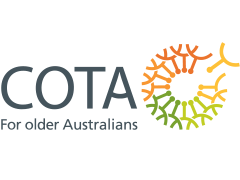Safety net threshold changes to PBS could undermine scheme
Changes to the price of Pharmaceutical Benefits Scheme (PBS) medicines to consumers have a significant impact on demand and may undermine the objectives of Australia’s National Medicines Policy, according to a new study published in the latest edition, Australian Health Review, the peer reviewed journal of the Australian Healthcare and Hospitals Association.
“In a change that attracted virtually no comment, the Department of Health and Ageing (DoHA) announced in December 2005 that the safety net thresholds (SNTs) for the PBS would be increased by an amount equal to two additional copayments for each of the years from 2006 to 2009,” Dr Kim Sweeny, Centre for Strategic Economic Studies, Victoria University, said.
“Although denounced by the then opposition as ‘ripping a hole in the PBS safety net’, the Labor Government has retained this policy change which was expected to save the government about $140 million over four years.
“This study looked at the impact that this change is having on the price of PBS medicines and the consequent effect on the willingness and ability of patients to purchase them.
“Increases in the level of the copayment have the dual effect of both reducing demand, because medicines increase in price, and shifting the share of the cost to the patient and away from the Government. Changes to the SNT however shift demand within a patient category between those covered by the safety net and those not covered,” said Dr Sweeny.
“Increases in the SNT reduce demand within the safety net category and again lead to shifts in the shares of cost borne by patients and the government.
“My study found that increases in co-payments and SNTs had a significant impact on the demand for medicines and could act as a deterrent to having a prescription filled, although this differed across patient groups. General patients display a greater reaction to changes in the patient price than do concessional patients.
“One explanation for this may lie in the types of medicines consumed by both groups. If concessional patients have a higher proportion of chronic conditions or conditions displaying symptoms then changes in prices may have less influence on their purchasing decisions.
“The changes to copayments and SNTs have been driven by the pressure on the PBS to reduce costs by shifting more of the expense to patients, either through increased copayments or by making it harder to benefit from the safety net provisions.
“However, given that increased costs can result in some patients being discouraged from buying medicines and abandoning existing treatments, this represents a real reduction in patient welfare and raises fundamental issues about how copayments should be regarded.
“There is a real danger that this could undermine the objectives of its National Medicines Policy to ensure timely access to the medicines that Australians need, at a cost individuals and the community can afford,” Dr Sweeny concluded.










